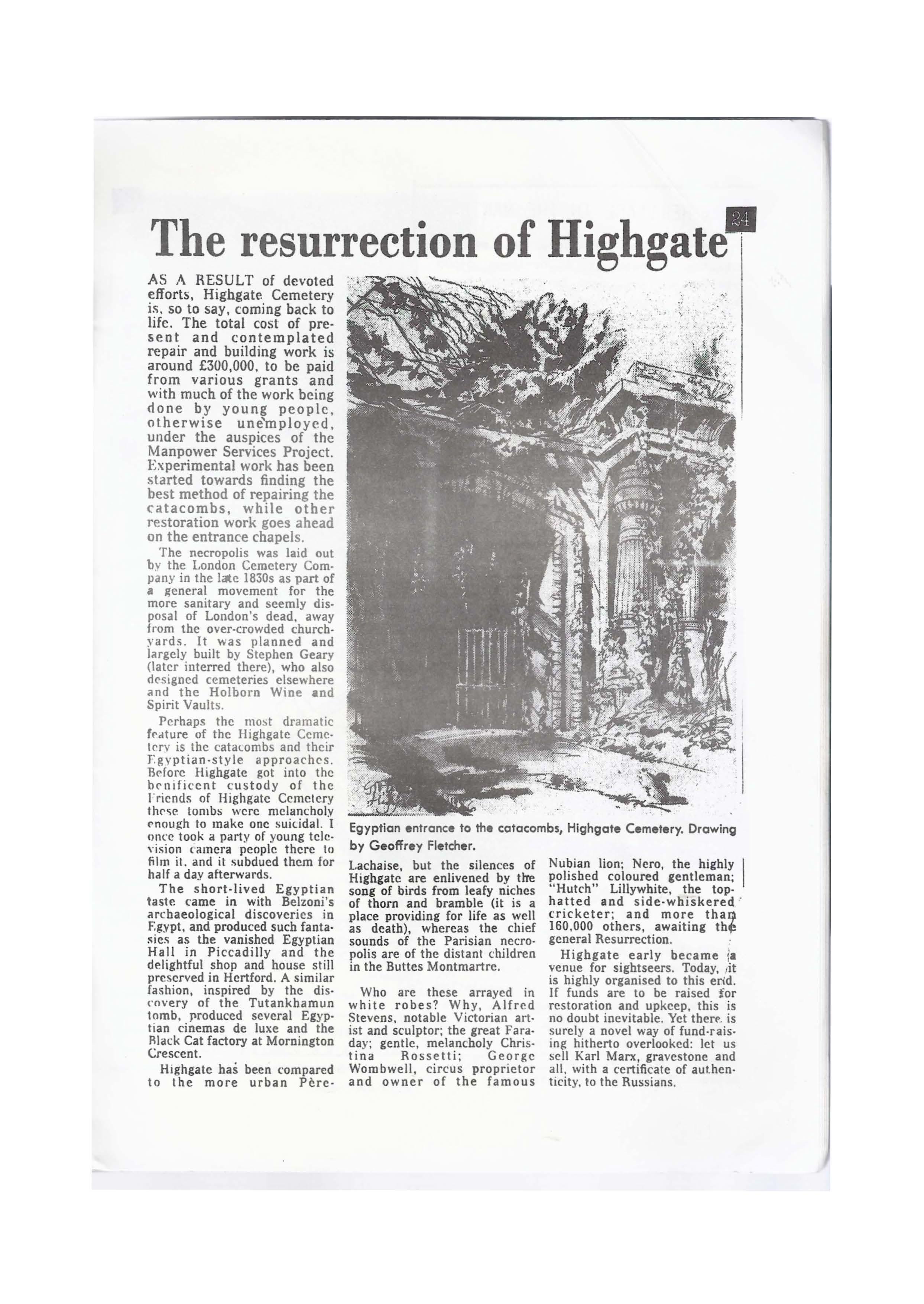
2 minute read
CHAIRMAN'S REPORT pa rt II B11
The resurrection of Highgate•
AS A RESULT of devoted efforts, Highgate Cemetery is. so to say, coming back to life. The total cost of pre• sent and contemplated repair and building work is around £300,000. to be paid from various grants and with much of the work being done by young people, otherwise une'mploycd, under the auspices of the Manpower Services Project. Experimental work has been started towards finding the best method of repairing the catacombs, while other restoration work goes ahead on the entrance chapels.
The necropolis was laid out b:v the London Cemetery Company in the late 1830s as part of a general movement for the more sanitary and seemly disposal of London's dead, away from the over-crowded churchyards. It was planned and largely built by Stephen Geary (later interred there), who also dc>signed cemeteries elsewhere and the Holborn Wine and Spirit Vaults.
Perhaps the most dramatic frdture of the Highgate CemelC'ry is the cataLOmbs and their ·· · J'.gyptian-style approaches. Bl'fore Highgate got into the bc-nificent custody of the l'ricnds of Highgate Ccmclcry thc-w tombs were melancholy l'nough to make one suic.idal. I onrc took a party of young television camera people there to film ii. and it subdued them for
Egyptian entrance to the catacombs, Highgate Cemetery. Drawing by Geoffrey Fletcher. half a day afterwards.
The short-lived Egyptian taste came in with Belzoni's archaeological discoveries in Egypt, and produced such fanta:1ies as the vanished Egyptian Hall in Piccadilly and the delightful shop and house still preserved in Hertford. A similar fashion, inspired by the dis<'nvery of the Tutankhamun tomb, produced several Egyptian cinemas de luxe and the Rlack Cat factory at Mornington Crescent.
Highgate has been compared to the more urban PereLachaise, but the silences of Highgate are enlivened by tire song of birds from leafy niches of thorn and bramble (it is a place providing for life as well as death), whereas the chief sounds of the Parisian necropolis are of the distant children in the Buttes Montmartre.
Who are these arrayed in white robes? Why, Alfred Stevens. notable Victorian art• ist and sculptor: the great Faraday: gentle, melancholy Christin a Rossetti; George Wombwell, circus proprietor and owner of the famous Nubian lion; Nero, the highly I polished coloured gentleman: "Hutch" Lillywhite, the tophatted and side-whiskered · cricketer: and more tha~ 160,000 others, awaiting th~ general Resurrection.
Highgate early became 1'a venue for sightseers. Today, 1it is highly organised to this end. If funds are to be raised for restoration and upkeep, this is no doubt inevitable. Yet thert. is surely a novel way of fund-raising hitherto overlooked: let us sell Karl Marx, gravestone and all. with a certificate of authenticity, to the Russians.










